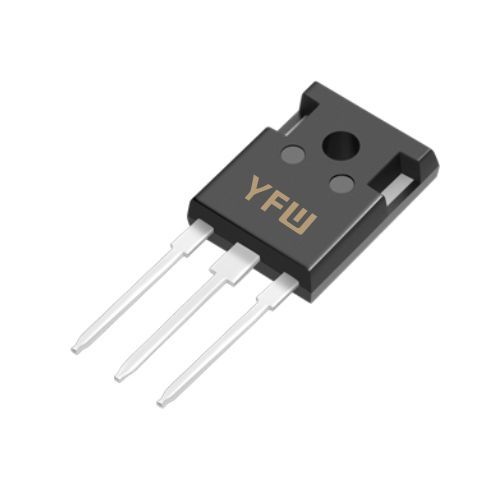Zener diodes are widely used for their simplicity and effectiveness in voltage clamping. When the input voltage exceeds the Zener breakdown voltage (Vz), the diode enters reverse breakdown mode, diverting excess current to ground and clamping the output voltage at Vz. For example, YFW’s 3EZ6.8D5 Zener diode (DO-41 package) offers precise voltage regulation with low leakage current, making it ideal for low-power applications like consumer electronics. However, designers must select an appropriate series resistor (R1) to limit current and prevent thermal runaway.
Transient Voltage Suppressors (TVS) provide fast-acting protection against high-energy transients. YFW’s SMA6J11CA TVS diode (SMA package) can handle peak pulse power up to 600W, clamping voltage within nanoseconds. In a typical setup, the TVS diode is placed across the load. When an overvoltage event occurs, it shunts the surge current to ground, protecting downstream components. Key considerations include matching the TVS’s clamping voltage to the load’s tolerance and ensuring sufficient power handling capacity.
A crowbar circuit using a Silicon-Controlled Rectifier (SCR) triggers a short circuit when overvoltage is detected, disconnecting the load. YFW’s YFW10P10AD SCR (TO-252 package) offers high current capability and rapid response. The circuit includes a voltage divider (R1, R2) to monitor input voltage. If the voltage exceeds the threshold, the SCR fires, causing a fuse or circuit breaker to trip. This solution is suitable for high-power applications like automotive systems but requires manual reset after triggering.
For precise voltage monitoring, the TL431 shunt regulator (compatible with YFW’s equivalent products) and an optocoupler (e.g., YFW-OC101) form a feedback loop. The TL431 compares the sampled output voltage against its 2.5V internal reference. If overvoltage occurs, it activates the optocoupler, signaling the controller to shut down the power supply. This design offers high accuracy and isolation, commonly used in industrial power supplies.
Component Selection: Match device parameters (e.g., breakdown voltage, power rating) to the application’s requirements. YFW’s MM1W165 Zener diode (SOD-123) suits space-constrained designs, while the MUR1040DFR fast recovery rectifier (TO-220F) enhances surge handling.
Response Time: TVS and Zener diodes excel in fast transients, while SCRs and crowbar circuits are better for sustained overvoltage.
Cost vs. Performance: Discrete solutions (Zener, TVS) are cost-effective for basic protection, whereas integrated circuits (e.g., YFW’s DC/DC converters with built-in OVP) offer advanced features like diagnostics.
By combining YFW’s high-quality semiconductors with these design strategies, engineers can create reliable overvoltage protection systems tailored to diverse applications, from consumer electronics to industrial equipment. Always validate designs through simulation and testing to ensure optimal performance under real-world conditions.
